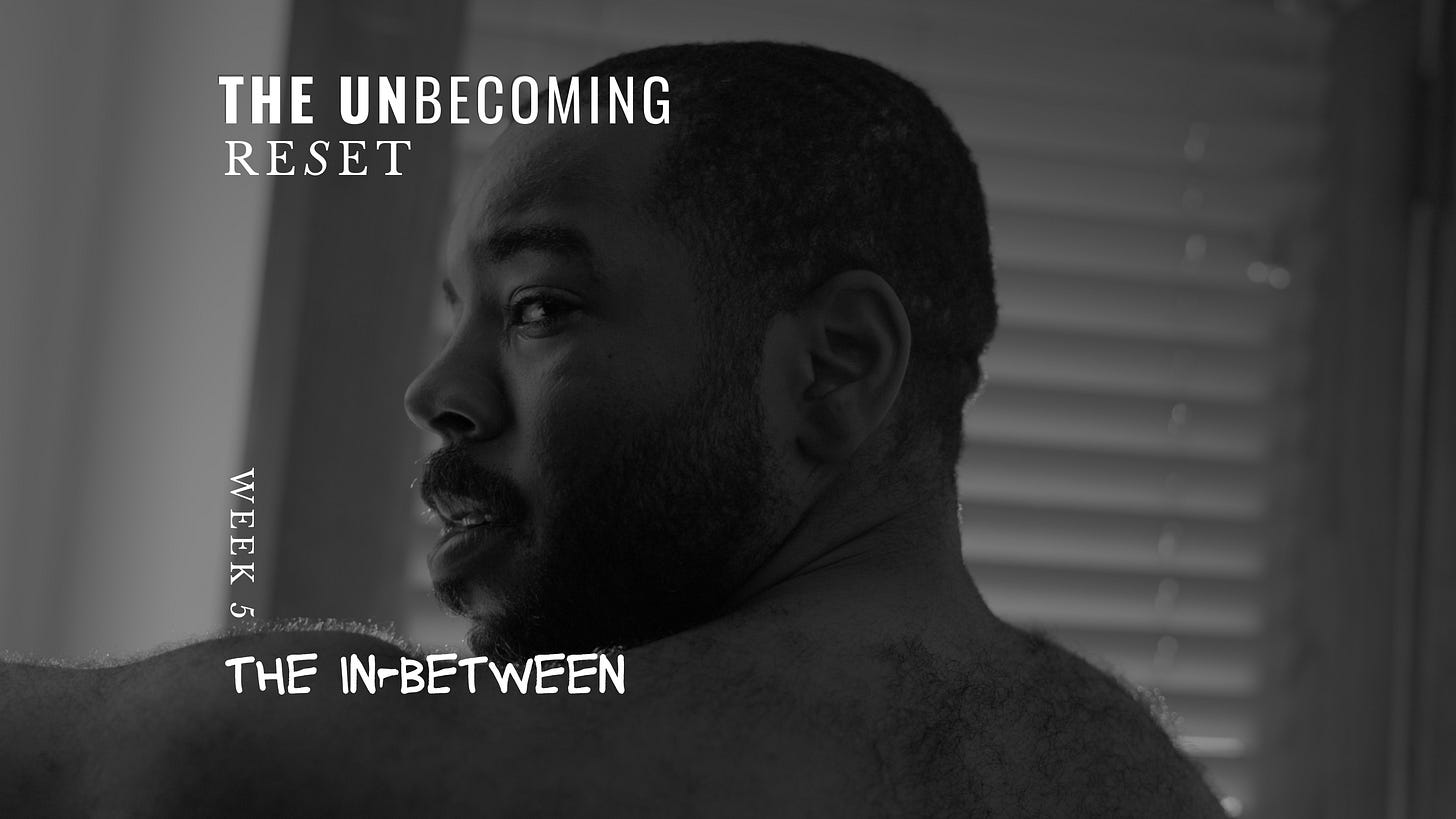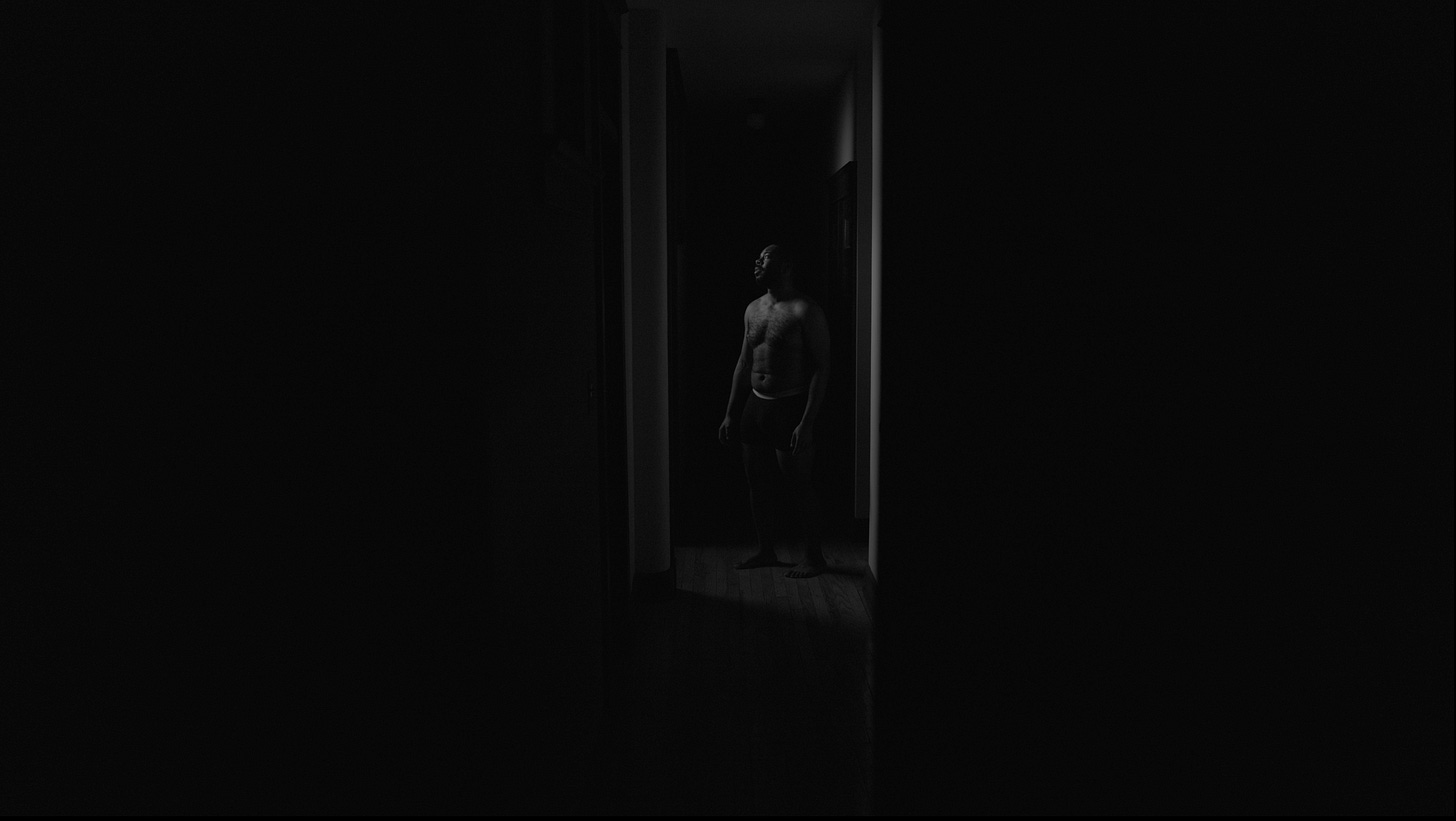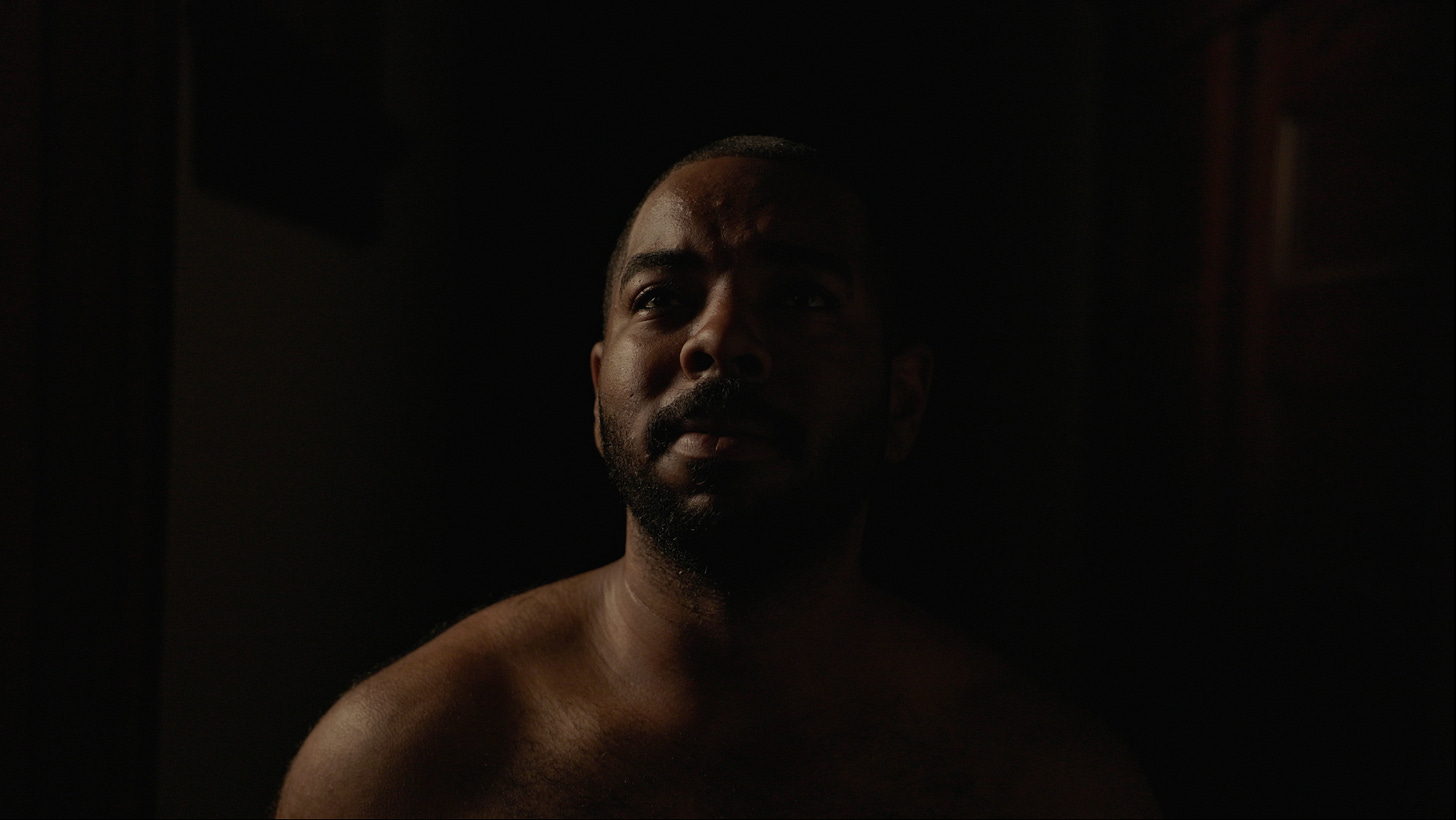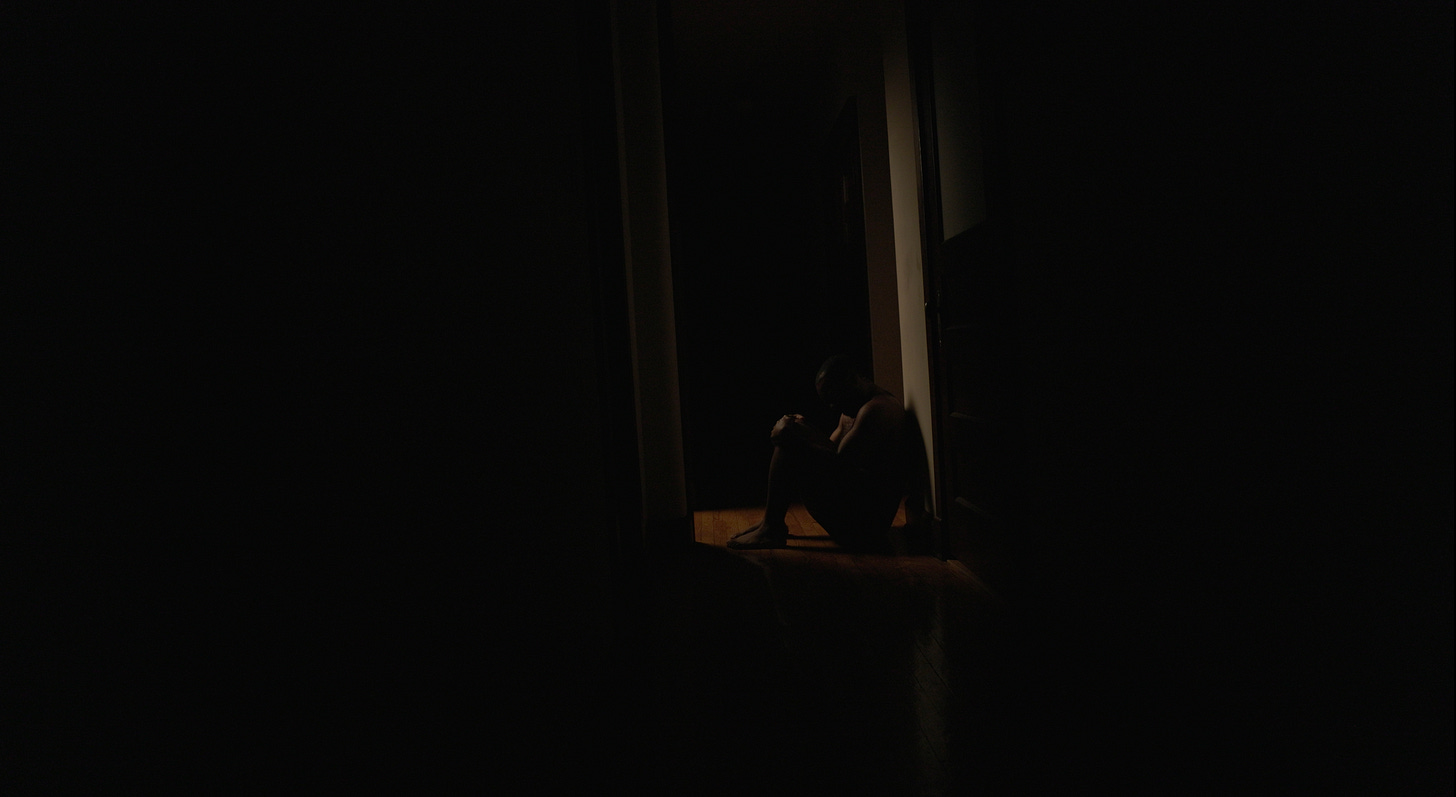The Space Between Who You Were and Who You’re Becoming
The UNBecoming Reset · Week 5
Once you have peeled back the layers and strip away the old identities, what you are left with is honestly a whole lot of nothing.
Or at least it feels like nothing.
That nothing is what I call Void. It is that strange, unsettling space you land in after you have let go of the people, roles, ambitions, and versions of yourself that no longer fit. You would think shedding would immediately feel freeing, like ripping off a tight shirt and finally being able to breathe, but the truth is that what comes next often feels quiet, confusing, and disorienting.
Void is the part of transformation no one talks about. It is the after that comes before the next. It is not exciting or glamorous or Instagrammable. It is the weird, liminal space where your old habits stop making sense, your identity no longer clings to you, and your previous ways of moving through the world feel like clothing that no longer fits your body. You are not who you were, but you are not yet who you are becoming.
You are simply here, in the in-between.
Part V. of The UNBecoming, Void
After I stepped away from the influencer world, I expected relief. And I did feel it at first, real and undeniable relief. But then came a silence I was not prepared for. A kind of internal echo. The identity I had worn for years was gone, and without it, I did not know how to introduce myself or what to reach for next. Void felt like floating in the dark, waiting for a shape that had not formed yet. No plan. No momentum. No deadlines or deliverables to hide behind. Just me and whatever remained once everything else had been stripped away.
And here is the thing: Void will make you want to run.
You will want to fill the space, rush into a new project, attach yourself to a new identity, or cling to something familiar just to avoid the discomfort of not knowing. But this part of the process matters. Maybe more than any other part. Void is not actually empty. It is spacious. It is the room you need in order to hear yourself again. It is the pause that allows your next chapter to find you, instead of you scrambling to force a new version of yourself out of fear.
So if you are here, if you are feeling that internal wobble or that hum of uncertainty, if something in you knows that one version of your life has ended but the next one has not begun yet, you are right on time. This week is not about fixing or designing a new identity. It is about allowing. Allowing the quiet. Allowing the unknown. Allowing yourself to exist without needing to become something new right away.
Void is uncomfortable, yes. But it is also where you begin to rebuild from truth instead of habit.
Ritual (start here)
Entering the Void
This week we begin with experience before analysis. The Void is not something you think about. It is something you sit inside. Before we explore it through reflection or writing, you will create a small version of the Void in your physical world.
Step 1: Choose an unfamiliar space
Find a place where you normally do not sit or spend time. This could be a corner of your bedroom, a hallway, the floor of your closet, or the bathroom with the lights off. Whatever feels the most alien to you. You are not trying to make the space meaningful or aesthetic. The point is to choose an environment that does not carry your usual associations or routines, so your body immediately registers the shift.
Dim the lights if possible, or sit in near-darkness.
Step 2: Cross into the space intentionally
Before you sit down, pause for a moment at the edge of the space. Then step into it as if you are entering a different state.
If there is a door you can close behind you, do it. If not, imagine a boundary you are crossing. This signals that you are leaving your everyday world and entering something more undefined.
Step 3: Sit and let the emptiness be exactly what it is
Sit facing a blank wall, a plain corner, or an intentionally empty part of the room. Do not adjust your position to become comfortable. Do not correct your posture. Do not focus on your breath. You are not trying to meditate or calm yourself. You are allowing yourself to experience a space that does not offer immediate meaning, stimulation, or direction.
There is no goal here. No insight you are trying to extract. No emotion you are trying to reach. Your only task is to sit long enough to notice what comes up for you when there is nothing to distract you.
Step 4: Stay longer than you want to
When you first feel the urge to get up, do not move. Stay exactly where you are for an additional sixty to ninety seconds. Set a timer if you need to. This extra time is the heart of the experience, because it reveals your relationship with stillness, discomfort, and the absence of movement.
Pay attention to what happens internally during that time. Do you feel anxious, bored, restless, empty, relieved, or confused? Whatever it is, there is no right reaction. You’re only seeking awareness.
Step 5: Leave the space slowly
When the time is up, rise gradually. Do not rush out. Step back across the threshold and return to your normal environment. Turn on the lights if you dimmed them. Notice how it feels to re-enter your familiar world after sitting in a space with no cues, no identity markers, and no narrative.
You have just experienced a small, controlled version Void. This will make the reflection and journal work that comes next more grounded.
Reflection (mid-week)
I recorded this reflection so you can hear it, not just read it.
Void is the part of the journey where clarity has not arrived yet. You are past the shedding, past the letting go, but not yet in the becoming. This week is not about forcing insight. It is simply about noticing yourself in the absence of direction.
Take a moment to think back to the ritual. The unfamiliar, quiet space. The sixty to ninety seconds that stretched longer than you expected.
Let the memory of that discomfort or stillness sit with you as you begin this reflection.
Once you are ready, ask yourself:
When everything went quiet, what did you reach for internally?
Not what you thought about, but what you reached for. Did you look for distraction? A plan? A problem to solve? Did you reach for control? Your instinctive reach reveals how you cope when the world stops giving you cues.
This is often the most honest mirror of who you are beneath your routines.
Pause here for a moment before moving on.What feels strangely possible now that the old identity is gone, even if you’re not sure what comes next?
This is not about defining your next chapter. It is about noticing the space that has opened. Possibility can feel vague or even unsettling.
Maybe it feels like, “I don’t know what I want, but I know it’s not that.”
Maybe it feels like relief.
Maybe it feels like fear.
Maybe it feels like nothing at all.
Whatever rises is enough. Void is not a place you solve. It is a place you witness. Let this reflection be exactly that: witnessing yourself in the in-between.
Journal Prompt (end here)
Void is the part of your journey where things are unsettled and unformed, and your only job is to notice what rises in that space.
This week, your journal work should feel light, gentle, and honest. Think of it as a way to capture the whispers that showed up during the ritual, the small truths that surface only when everything else goes quiet.
Choose one prompt this week.
Your goal: let whatever comes out be raw, incomplete, or even confusing. Don’t force clarity or meaning. Void is not about having answers. It is about learning to hear yourself without all the noise.
What did you notice about yourself when there was nothing to do, fix, or achieve?
Think back to the ritual. When the noise fell away, what parts of you became louder? Did you feel restless, relieved, unsure, irritable, peaceful, disconnected, curious? Describe what showed up and how it sat in your body. This is often the truth you miss when life keeps you busy.
Keep reading with a 7-day free trial
Subscribe to by Kasim to keep reading this post and get 7 days of free access to the full post archives.






